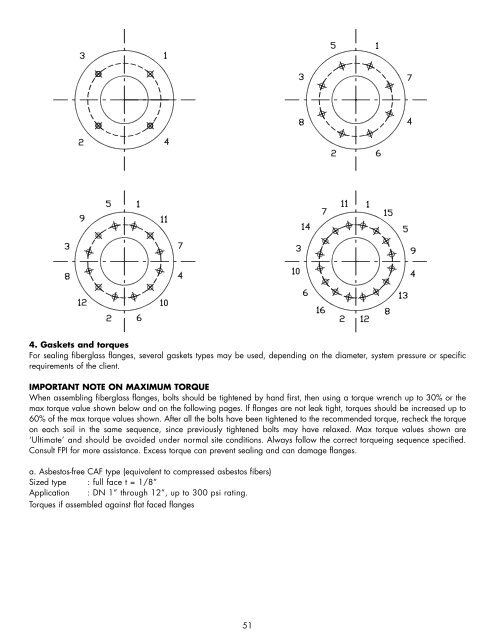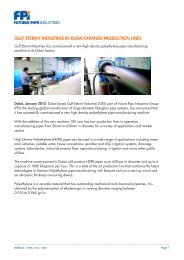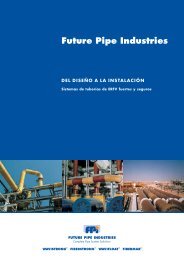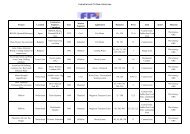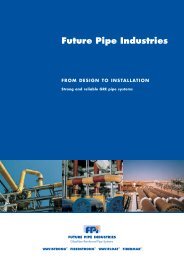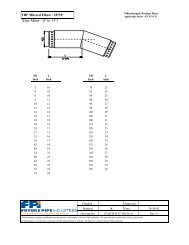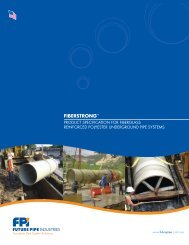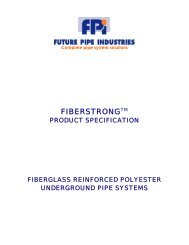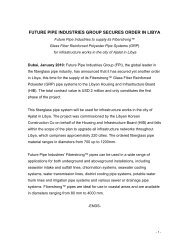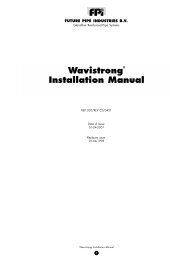Untitled - Future Pipe Industries
Untitled - Future Pipe Industries
Untitled - Future Pipe Industries
You also want an ePaper? Increase the reach of your titles
YUMPU automatically turns print PDFs into web optimized ePapers that Google loves.
4. Gaskets and torques<br />
For sealing fiberglass flanges, several gaskets types may be used, depending on the diameter, system pressure or specific<br />
requirements of the client.<br />
IMPORTANT NOTE ON MAXIMUM TORQUE<br />
When assembling fiberglass flanges, bolts should be tightened by hand first, then using a torque wrench up to 30% or the<br />
max torque value shown below and on the following pages. If flanges are not leak tight, torques should be increased up to<br />
60% of the max torque values shown. After all the bolts have been tightened to the recommended torque, recheck the torque<br />
on each soil in the same sequence, since previously tightened bolts may have relaxed. Max torque values shown are<br />
‘Ultimate’ and should be avoided under normal site conditions. Always follow the correct torqueing sequence specified.<br />
Consult FPI for more assistance. Excess torque can prevent sealing and can damage flanges.<br />
a. Asbestos-free CAF type (equivalent to compressed asbestos fibers)<br />
Sized type : full face t = 1/8”<br />
Application : DN 1” through 12”, up to 300 psi rating.<br />
Torques if assembled against flat faced flanges<br />
51


